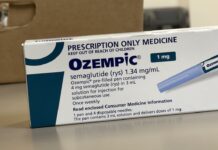Case scenarios
Abdel, 75, has end-stage chronic kidney disease (eGFR 10 mL/min) secondary to poorly controlled type 2 diabetes. He is currently prescribed calcium 2 tablets twice daily with food, calcitriol 0.25 mcg twice a week, perindopril 5 mg daily, sodium bicarbonate capsule 840 mg daily, furosemide 250 mg daily and insulin aspart + insulin aspart protamine
20 units twice daily. He informs you that he has been told he will likely need dialysis in the coming months. You are reviewing Abdel’s medicines and note that his total calcium levels are low at 1.9 mmol/L.
Learning ObjectivesAfter reading this article, pharmacists should be able to:
Competency standards (2016) addressed: 1.1, 1.3, 1.4, 1.5, 3.1, 3.2, 3.3, 3.5 Accreditation number: CAP2407AMCS Accreditation expiry: 30/06/2027 |
Already read the CPD in the journal? Scroll to the bottom to SUBMIT ANSWERS.
Introduction
Electrolytes, including potassium, magnesium, sodium and calcium, are essential to the functioning of the human body. The significance of potassium and magnesium is covered in the first part of this two-part series, Electroly
THIS IS A CPD ARTICLE. YOU NEED TO BE A PSA MEMBER AND LOGGED IN TO READ MORE.




 Now a PhD candidate, former Sudanese refugee and NSW Pharmacist of the Year
Now a PhD candidate, former Sudanese refugee and NSW Pharmacist of the Year  David North OAM
David North OAM NSW Early Career Pharmacist of the Year Lily Pham
NSW Early Career Pharmacist of the Year Lily Pham










